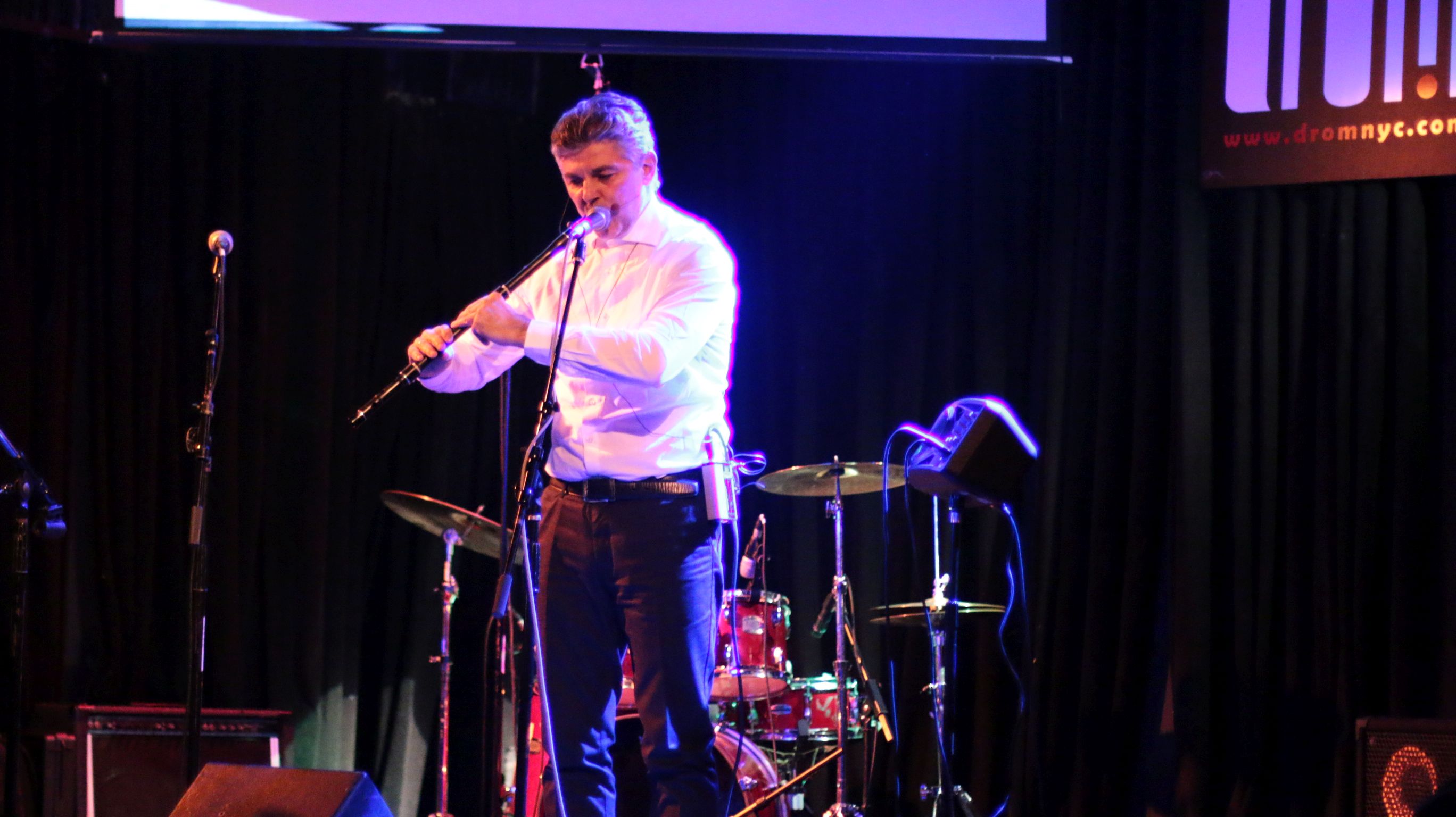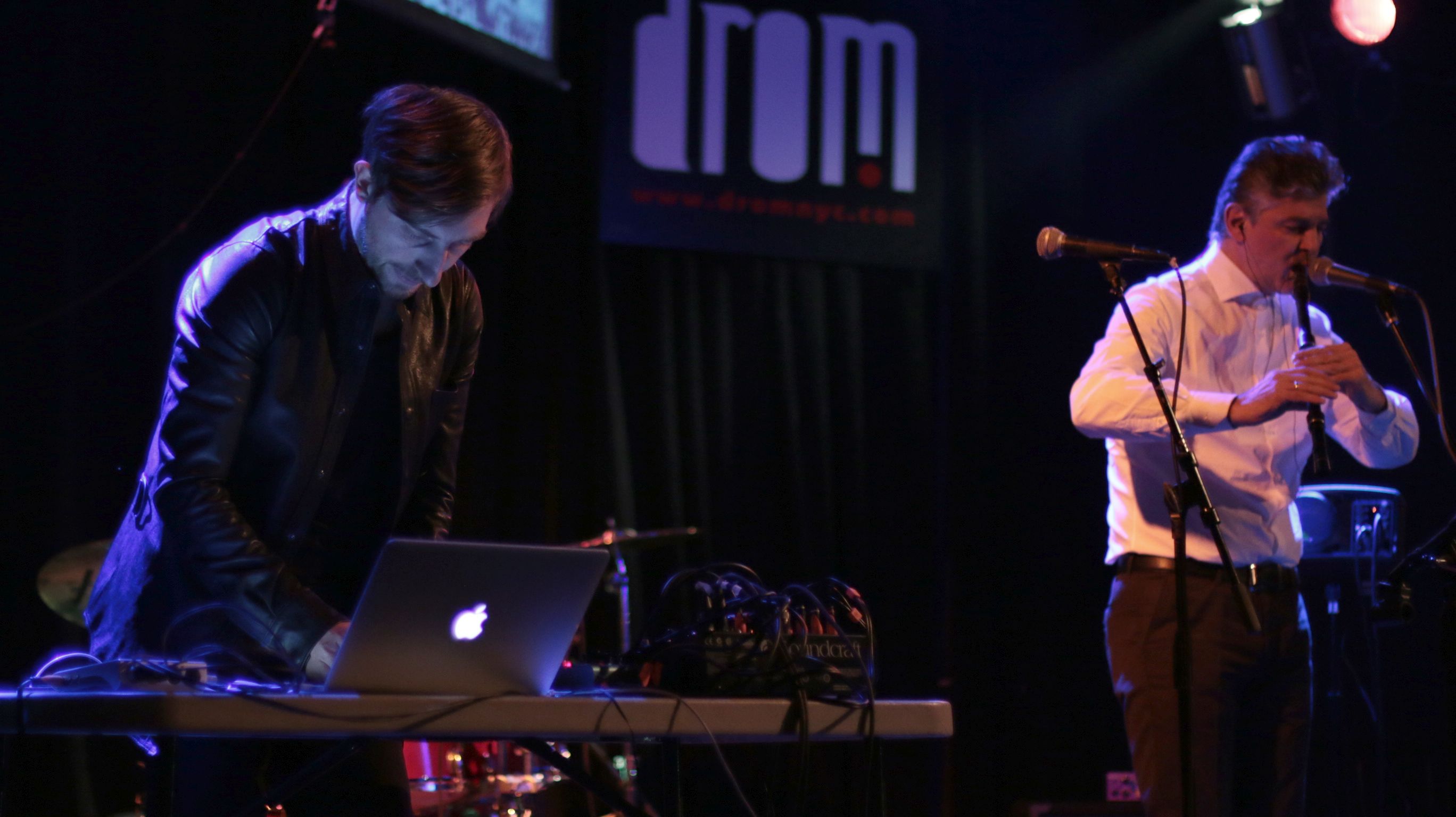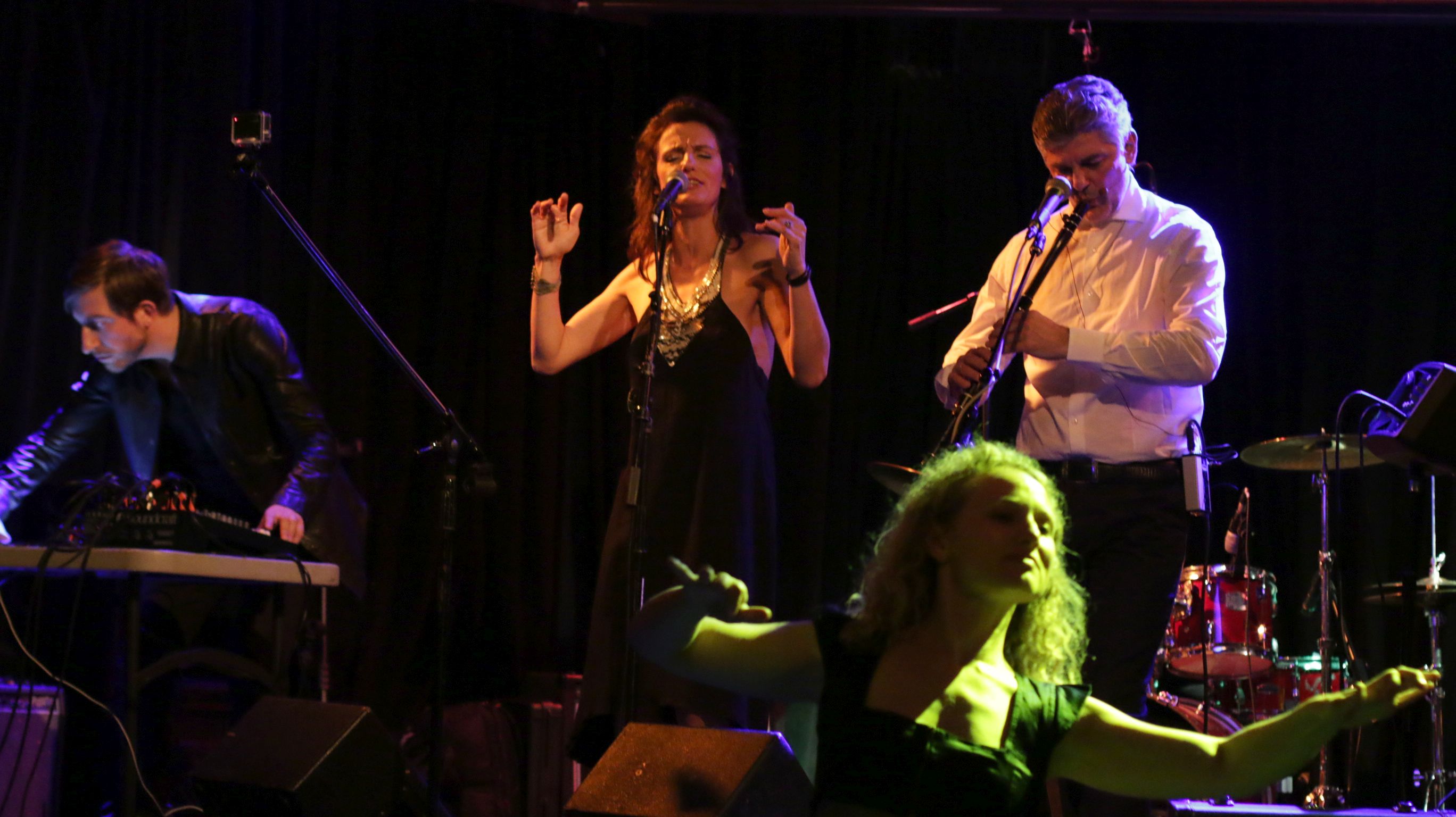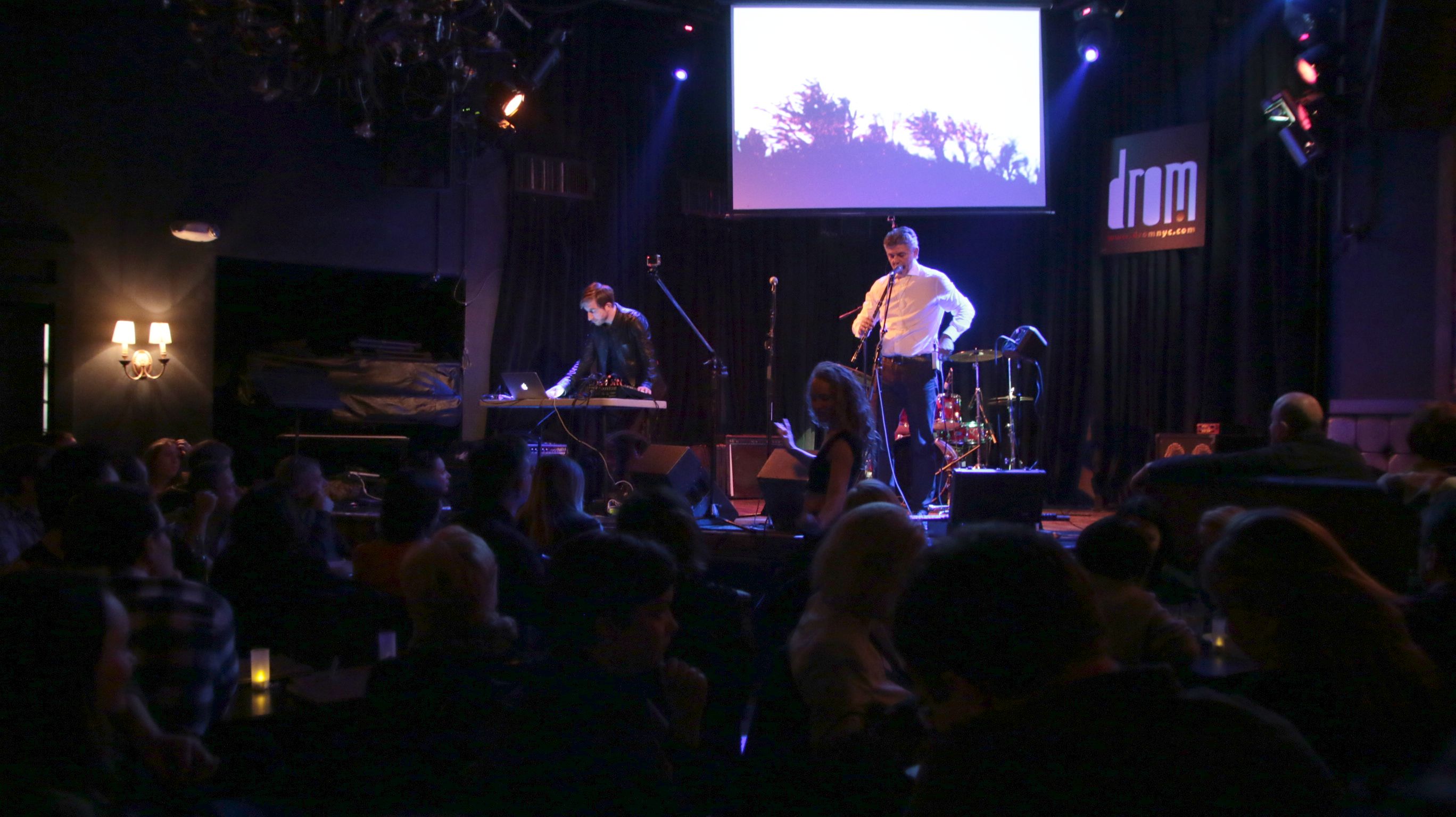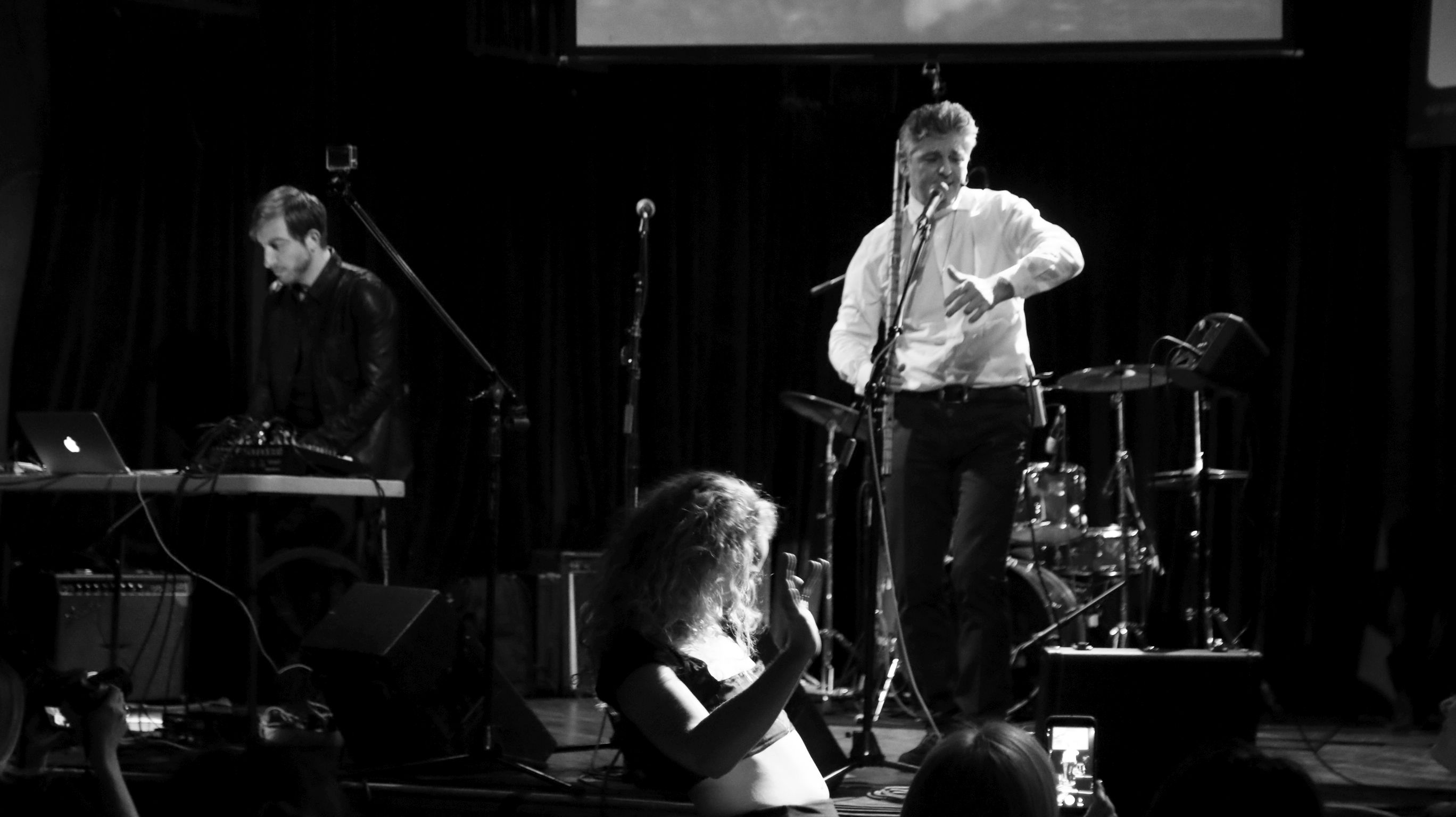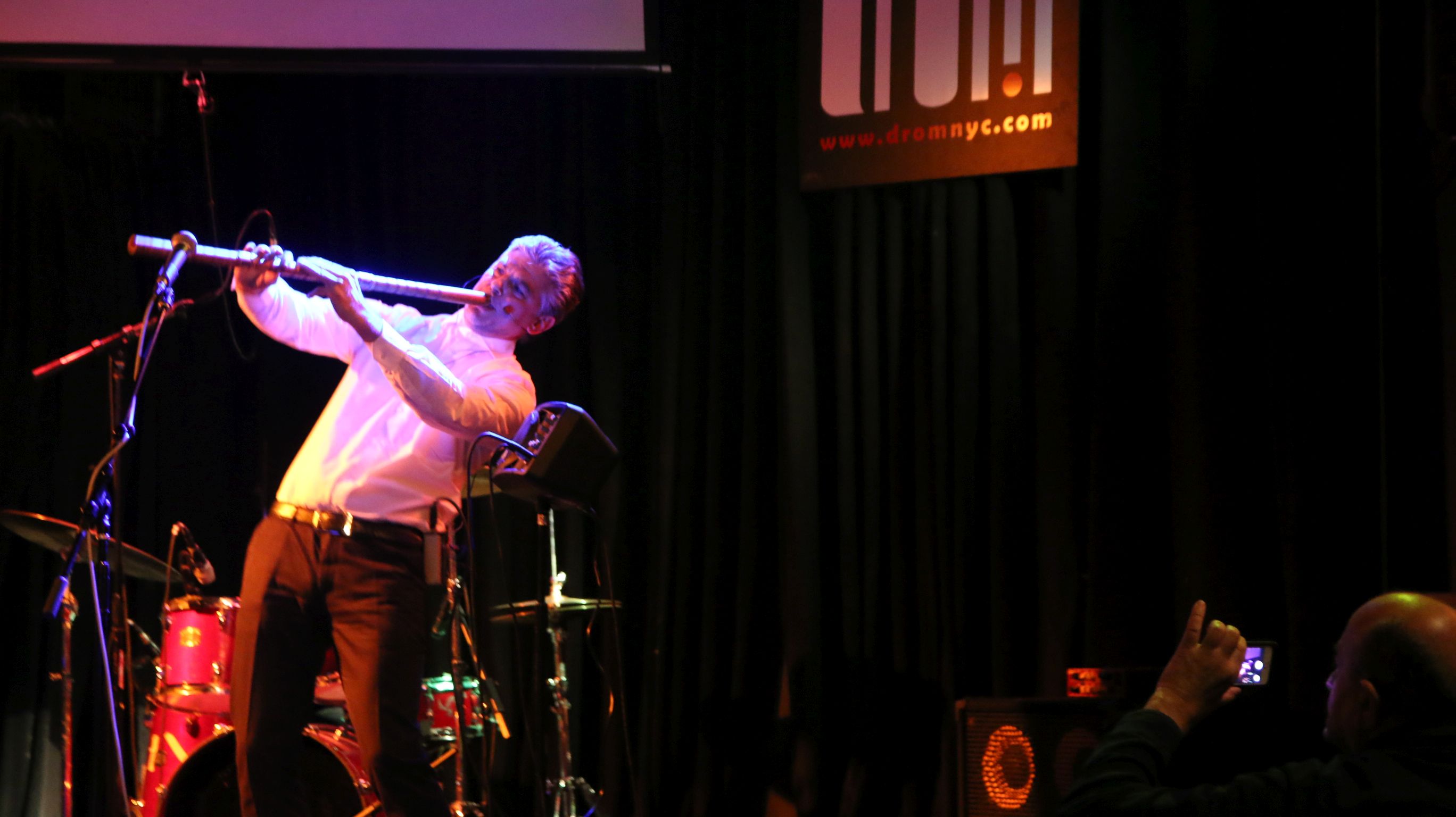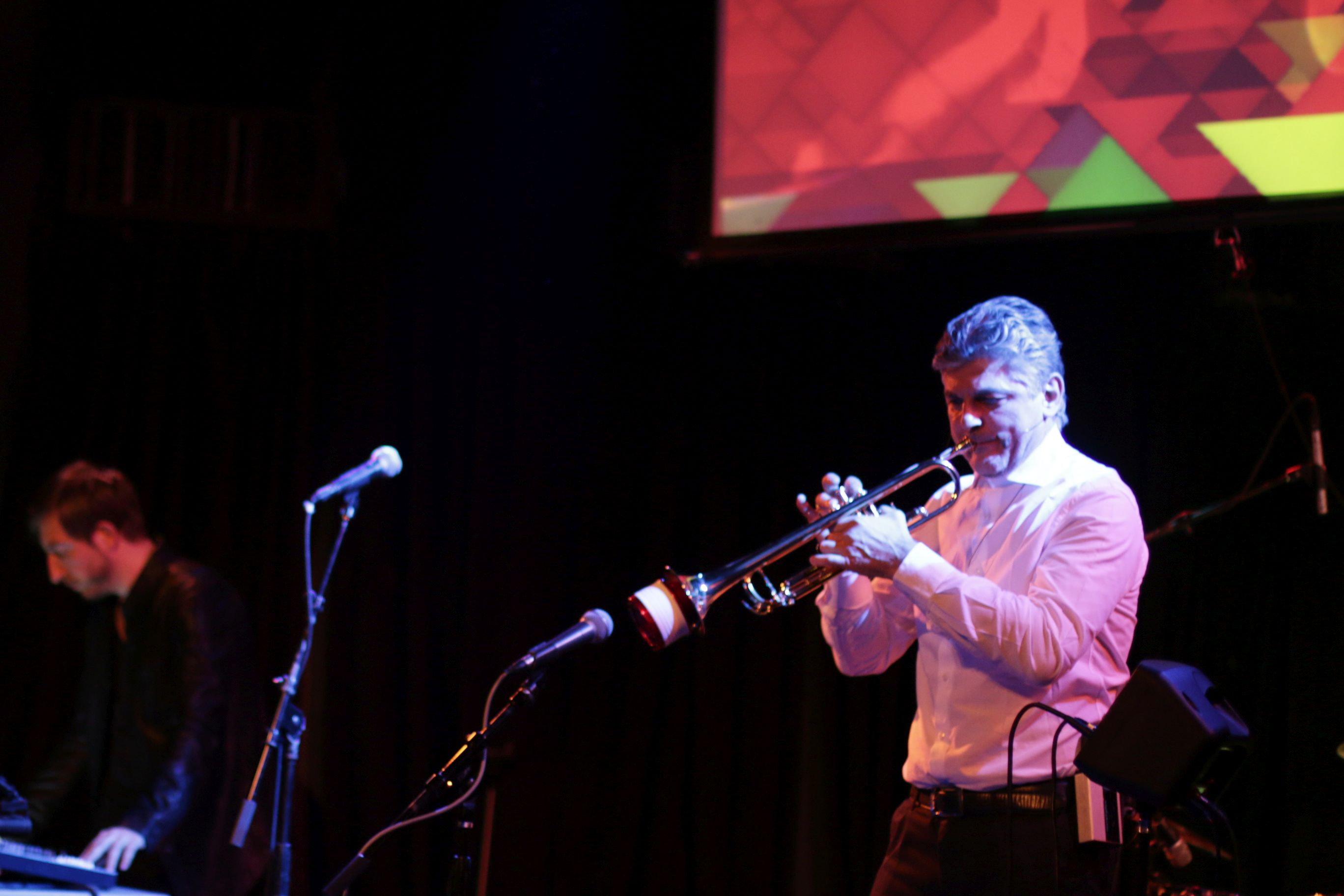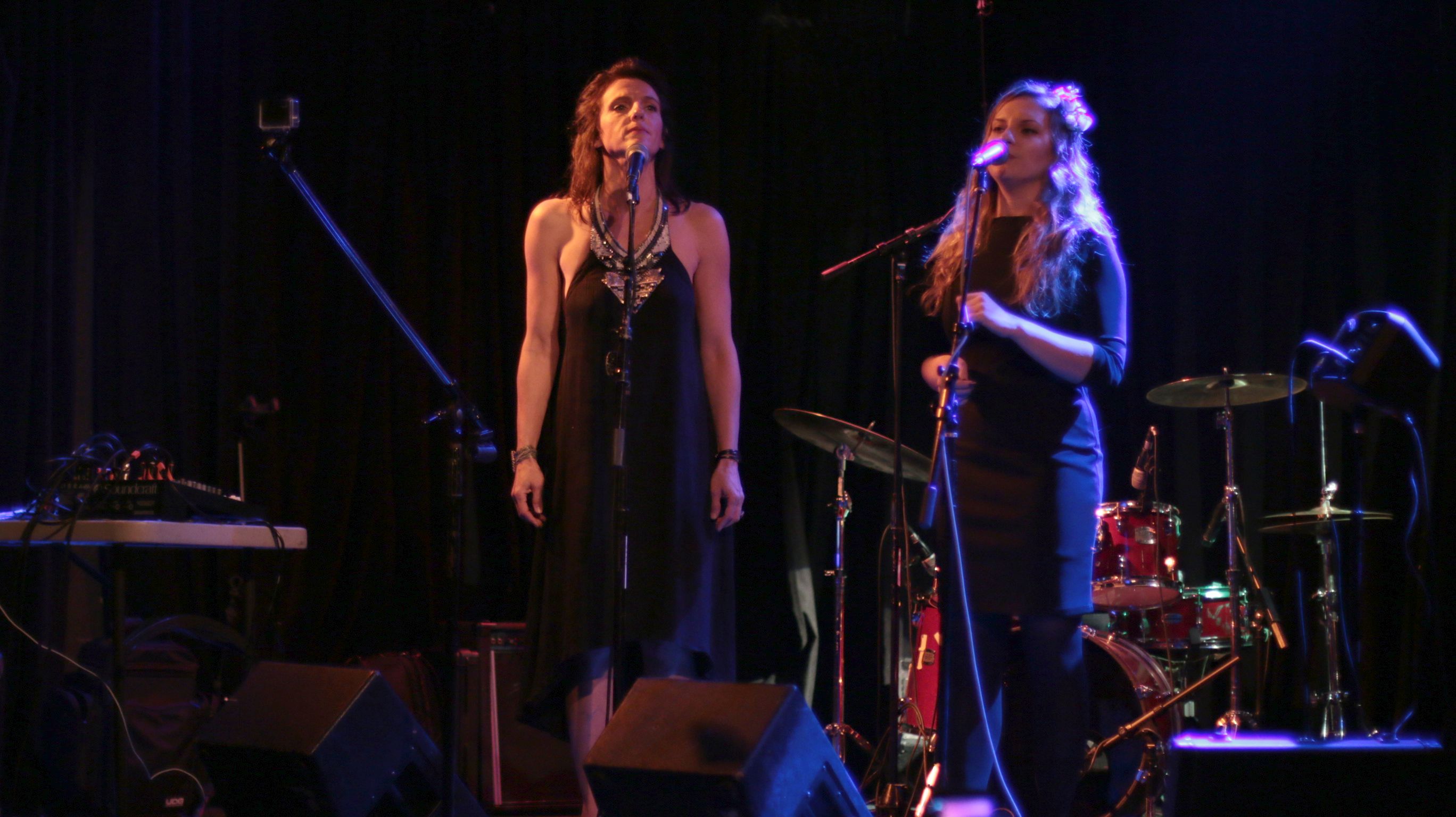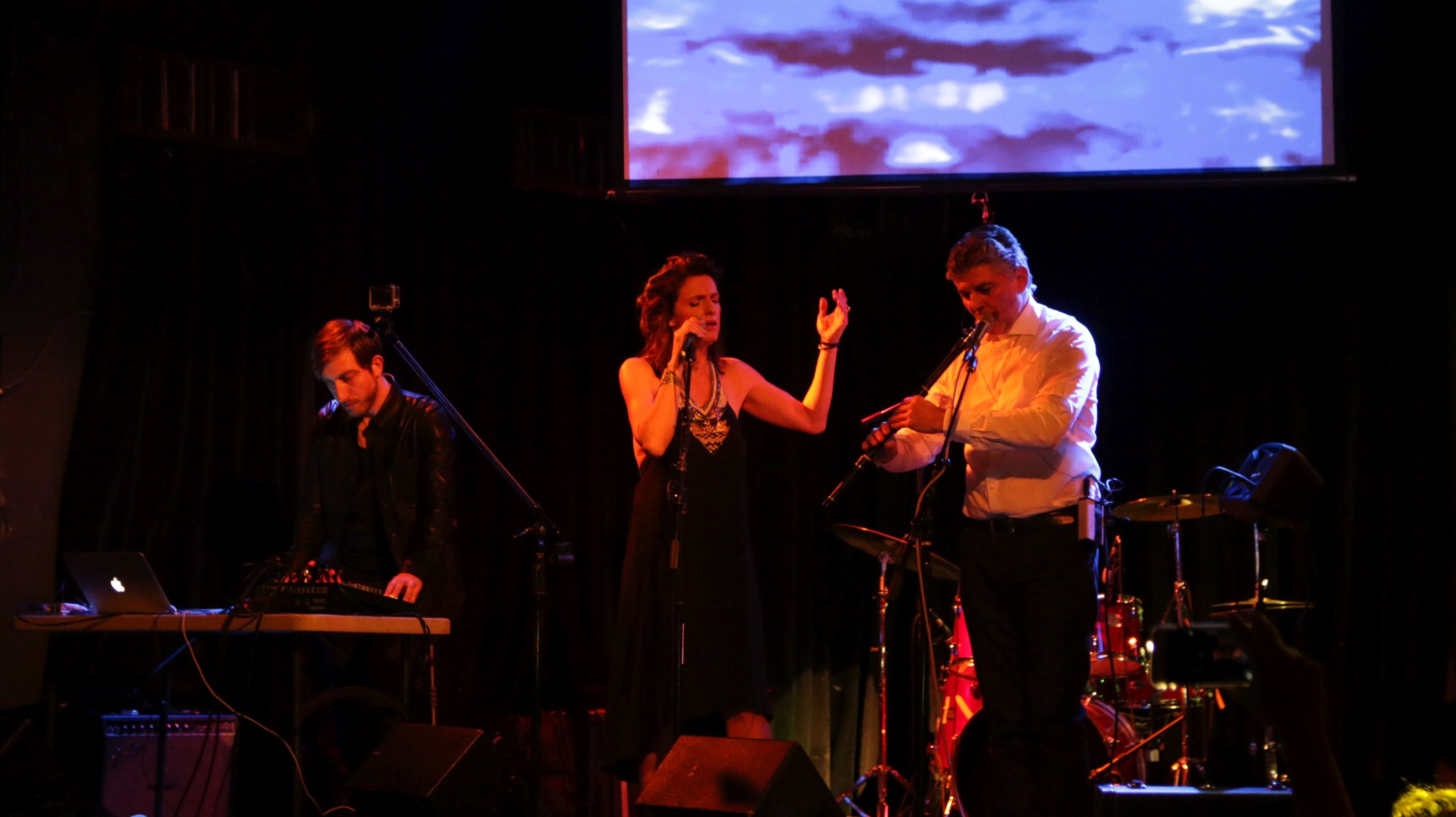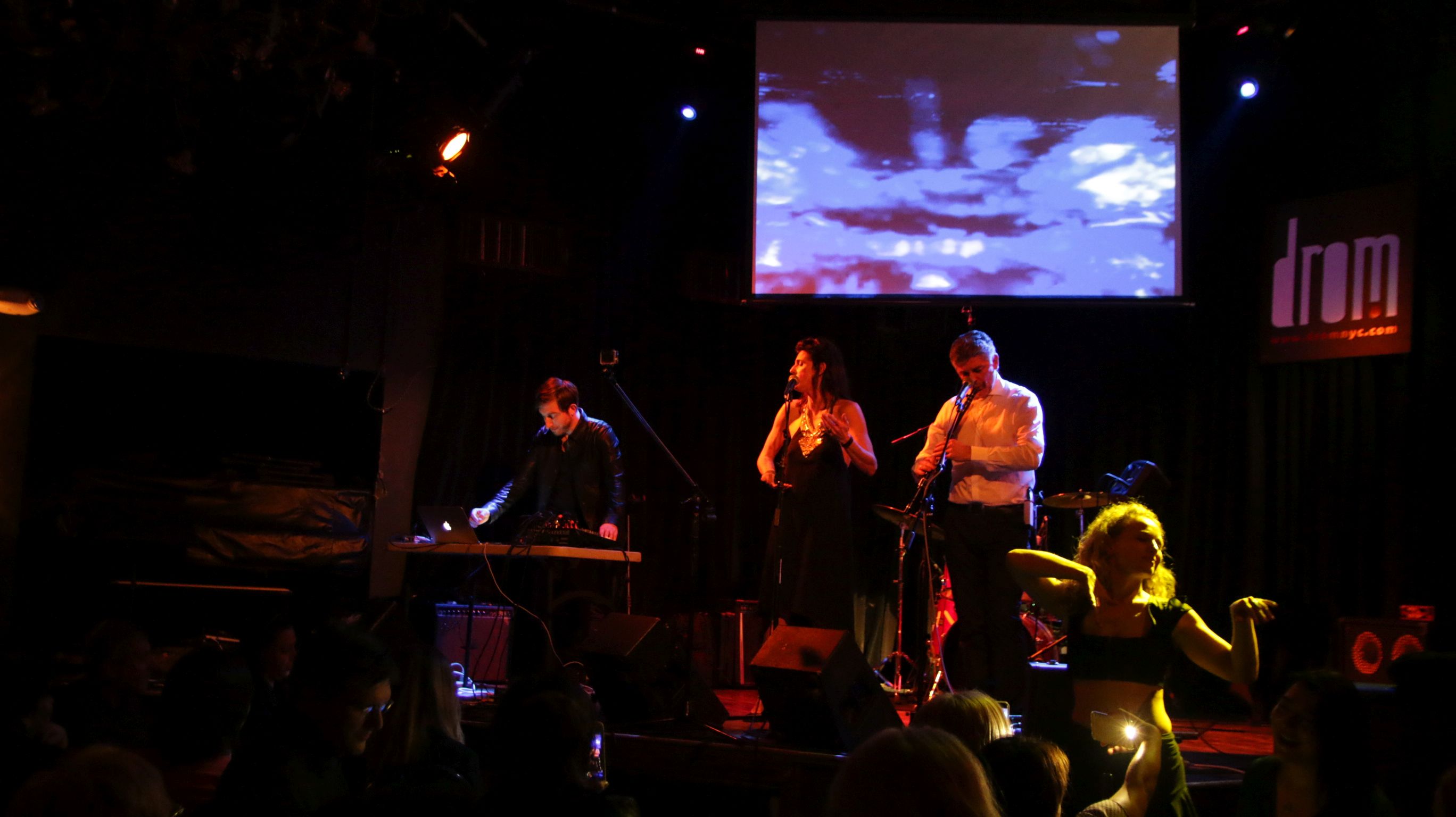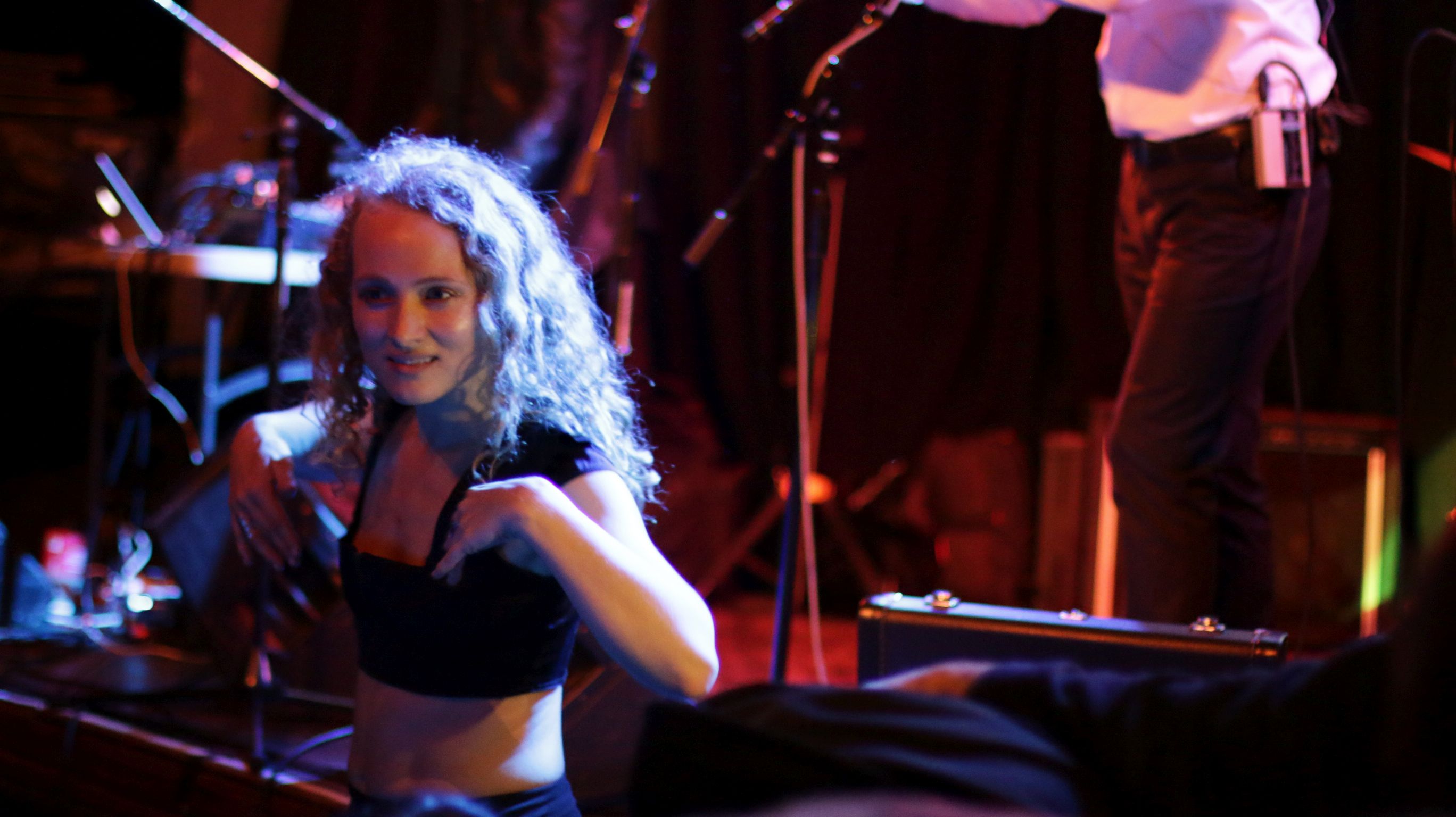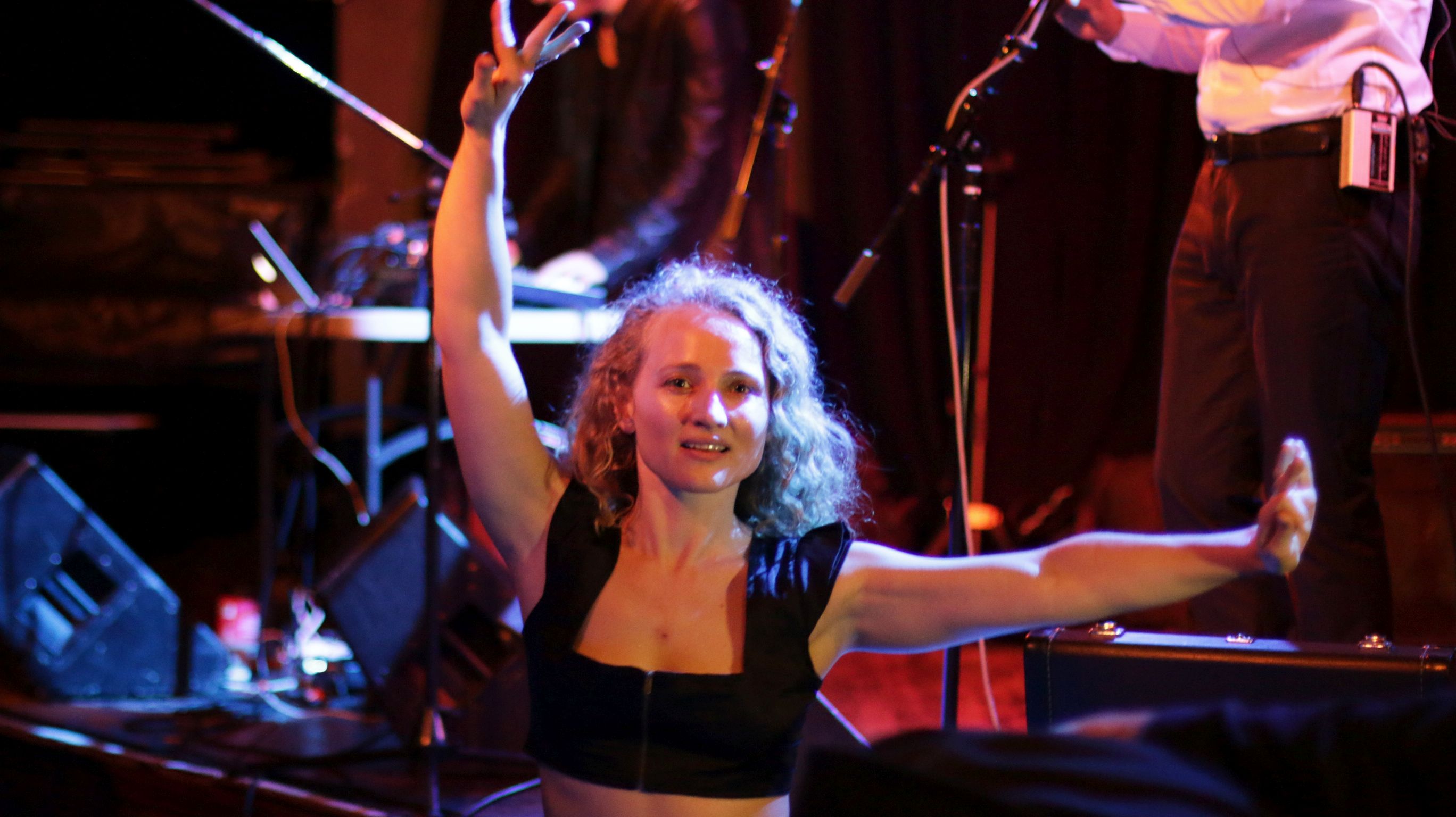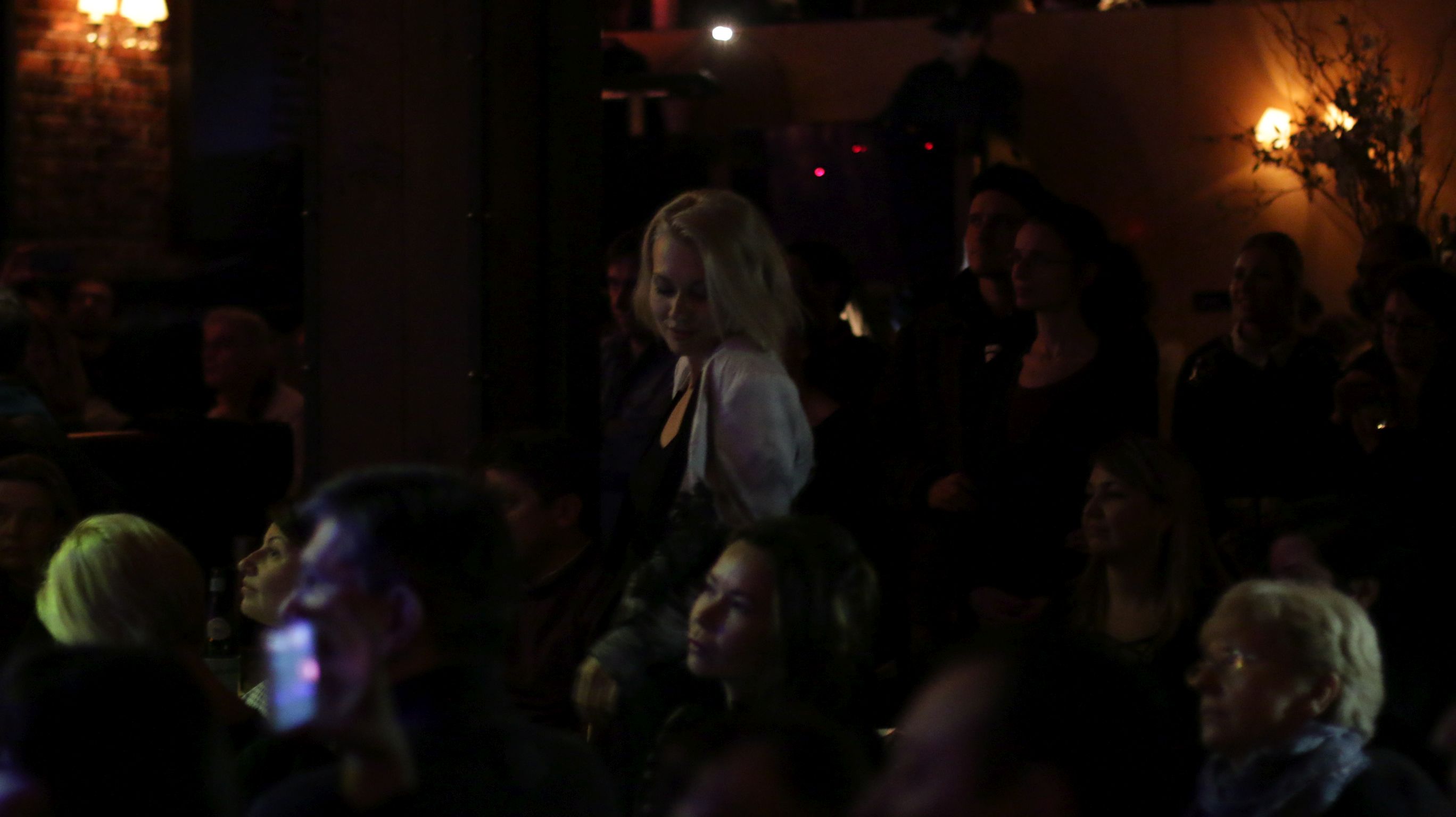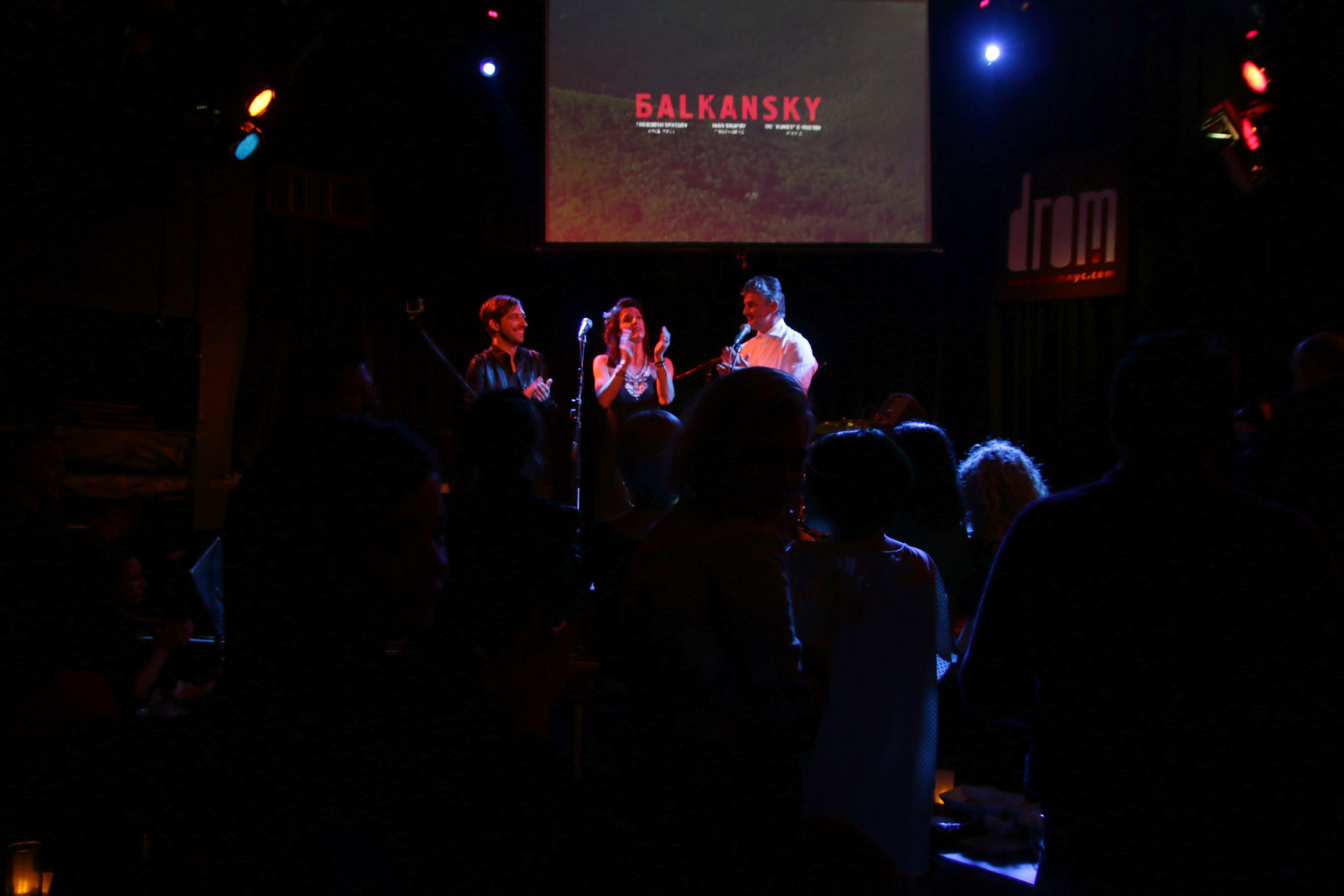a note from Mart Kawaii: This article is special for me, not only because I’ve followed what Бalkansky were doing for many years, but also because I’m Bulgarian myself and hearing Bulgarian folklore here in NYC, abroad, far from your homeland, makes the fascinating rhythms sounds even stronger and more sentimental. I can tell you a lot about Бalkansky, I was even thinking to be the one writing the review, but last minute changes made me the photographer and you’ll have the pleasure to read the opinion of somebody touched by the music for the first time. Kasia Prada, native to another Eastern European country Ukraine, shares her sentiments and the pictures coming to her head while listening to БалканSKY.
Surprisingly the last time I passed Tompkins Square Park to go to DROM was to find a guy who would sell me a flute.
Walking to the venue I was thinking about what I really know about the Bulgarian music or culture. Legend tells that Orpheus, the semi-mythical musician and underworld explorer was born in Thrace, modern day Bulgaria. This lyre-player and singer was one of the most popular and enduring in the ancient world and his story is well known around the world: the music Orpheus played soothed men, beasts and even trees. He descended into the underworld to rescue his dead wife, Eurydice. Having lost her again at the last moment, Orpheus spent the rest of his days wandering around the Rhodope Mountains until his mournful singing drove the Bacchantes (ecstatic female devotees of Dionysus) to tear him into pieces and dump his dismembered remains in the river. Music became a journey to man who was grieving his love.
Standing next to Sing-Sing karaoke two Asian tourists with a printed map with directions to DROM, asked me if I’m looking for a Bulgarian party. “What is? What is DROM?”
DROM means a journey, or a moving crowd and in New York it is a gypsy-themed lounge that hosts a global roster of performers. That’s why I expected to see a Gypsy Brass Band, but what I didn’t expect was to hear a pleasant acapella of a female vocalist and a solo of a musician who played kaval (an eight-hole wooden “shepherd” flute). It was perfect.
After I walked in, I headed to the back of the venue where the stage was surrounded by tables. The background wall had a painting of seagulls flying over a watchtower and in corners of the bar hung empty iron cages. There was a video screen, which lit up with the image of a flock of crows flying over tree crowns. A red line across the screen interrupted them, we saw a motif of nature going to sleep, winter fields, nude tree branches and a dandelion losing its seeds to the wind.
БALKANSKY is an audio-visual art project that combines traditional Bulgarian music with electronic sound and vision. It is realized in collaboration between Ivo Christov and Ivan Shopov. Later on the musical legend Theodosii Spassov joined the project and nowadays, all three of them present the project live all around the world. When the project is presented as a live act it includes music performed by Theodosii Spassov, mixed with electronic sounds and beats by Ivan Shopov and interactive visuals from Ivo Christov.
The NYC show, part of their North American tour, opened with traditional folklore songs by two Bulgarian artists calling The Big Apple home since many years – Vlada Tomova and Petya Maglova-Alvarado Slowly Ivan Shopov, also known for his stage name Cooh, was adding beats accompanied by the kaval and occasional singing of Theodosii Spassov – one of the most popular and internationally renown Bulgarian ethno and jazz musicians.
“Our music is a mix of traditional Bulgarian, contemporary, classical…” Theodosii warmly told the audience adding. “But it is good!” And good it was indeed!
Nobody can say when the Bulgarian folklore music was created, conveying through the centuries the mysticism of chronicles, fables and legends.The sound is often polyphonic, featuring many voices and shifting melodies, and is more in tune with the melodies and rhythms of the Orient than with anything coming from the West. Balkan music also includes meters with 5, 7, 9, 11, 13, and 15 beats per measure, sometimes referred to as “asymmetric meters”. That’s may be one of the reasons why the IDM glitchy electronica with a drum&bass/dubstep touch fitted so well the sound of the kaval and enhanced the magic of the Bulgarian folklore translating it to the modern times and days.
And while Cooh was adding more and more beats to the soundscape, a dancer came closer to the stage – her dances reminding me of a combination of belly dance, modern ballet and improvisation. I thought – this was a perfectly orchestrated show of a traditional instrument, a voice and a dance all having ancient history.
Certain traditional musical instruments were used to soothe the mind and the spirit whereas; the dance was a medium to connect with the universe. Not many people can really understand the true meaning that lies behind oriental dance since the real story of belly dance and its symbolic significances are unknown.Theodosii Spassov kept changing his instruments through the show and now he pulled a new one asking the audience to repeat the name of it after him. “Lets say together: vlashki duduk,” Vlada Tomova appeared on the stage again dedicating a special song she wrote to all the women in the world and in the audience. Few women got up to dance.
The last image on stage is that of Bulgarian embroidery. For five hundred years Bulgaria was a province of the Turkish Empire. However, despite their forced integration, Bulgarians were able to keep much of their cultural heritage intact. Much can be attributed to native crafts. Embroidery in particular with its obvious and purposely defined decorative compositions, was able to identify Bulgarians in general and the areas within the then Turkish province where Bulgarians lived, as being of a separate and unique identity to that of the rest of the Empire.
I had a pleasure of hearing Bulgarian melodies I wasn’t familiar wit and to illustrate to you my impression of the show. If you missed it and you’re in the US you can still catch a show at Baltimore on December 1, Atlanta – December 3, LA – December 4, Seattle – December 5, San Francisco – December 6, San Diego – December 10 and Calgary on December 12. Quite intense program, huh!
More about the tour and the project on balkansky.bg and about Vlada Tomova on vladatomova.com.

